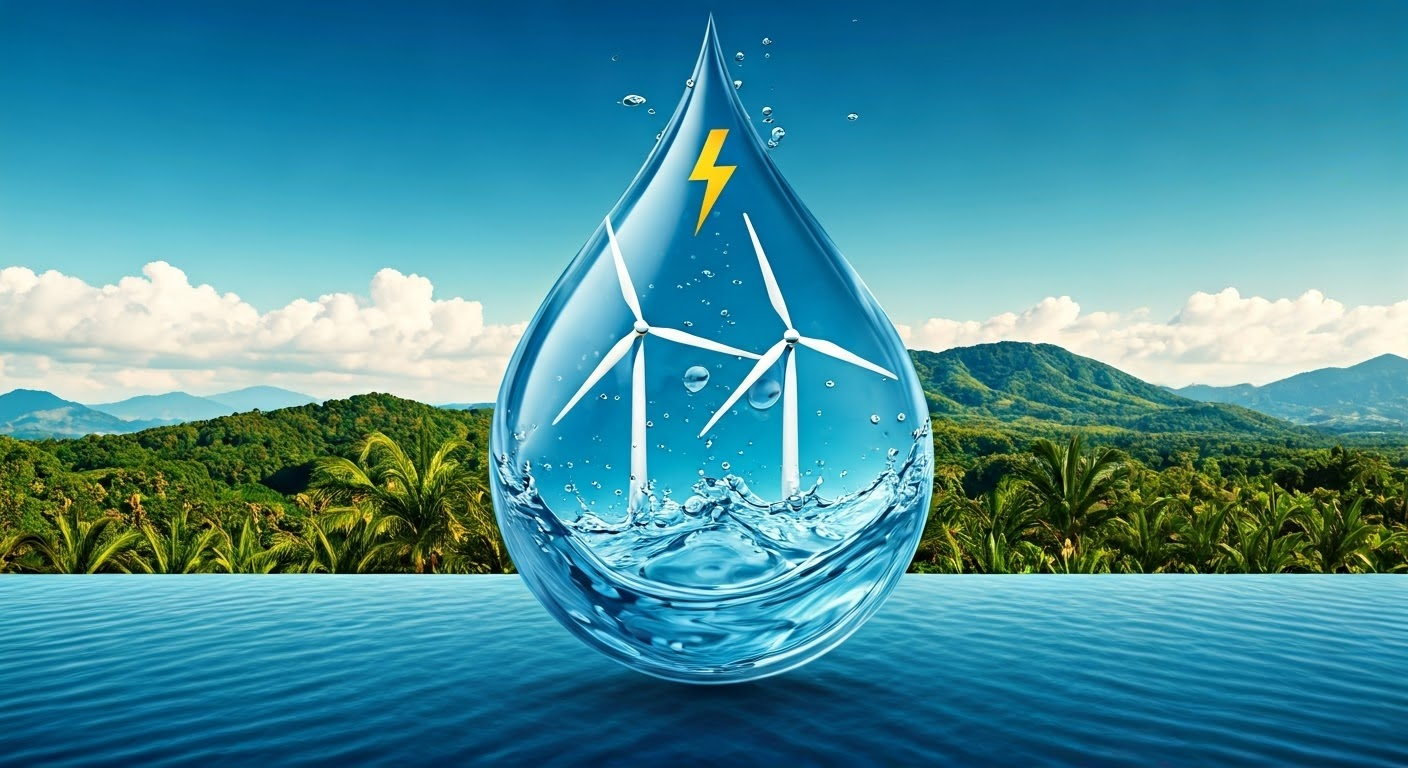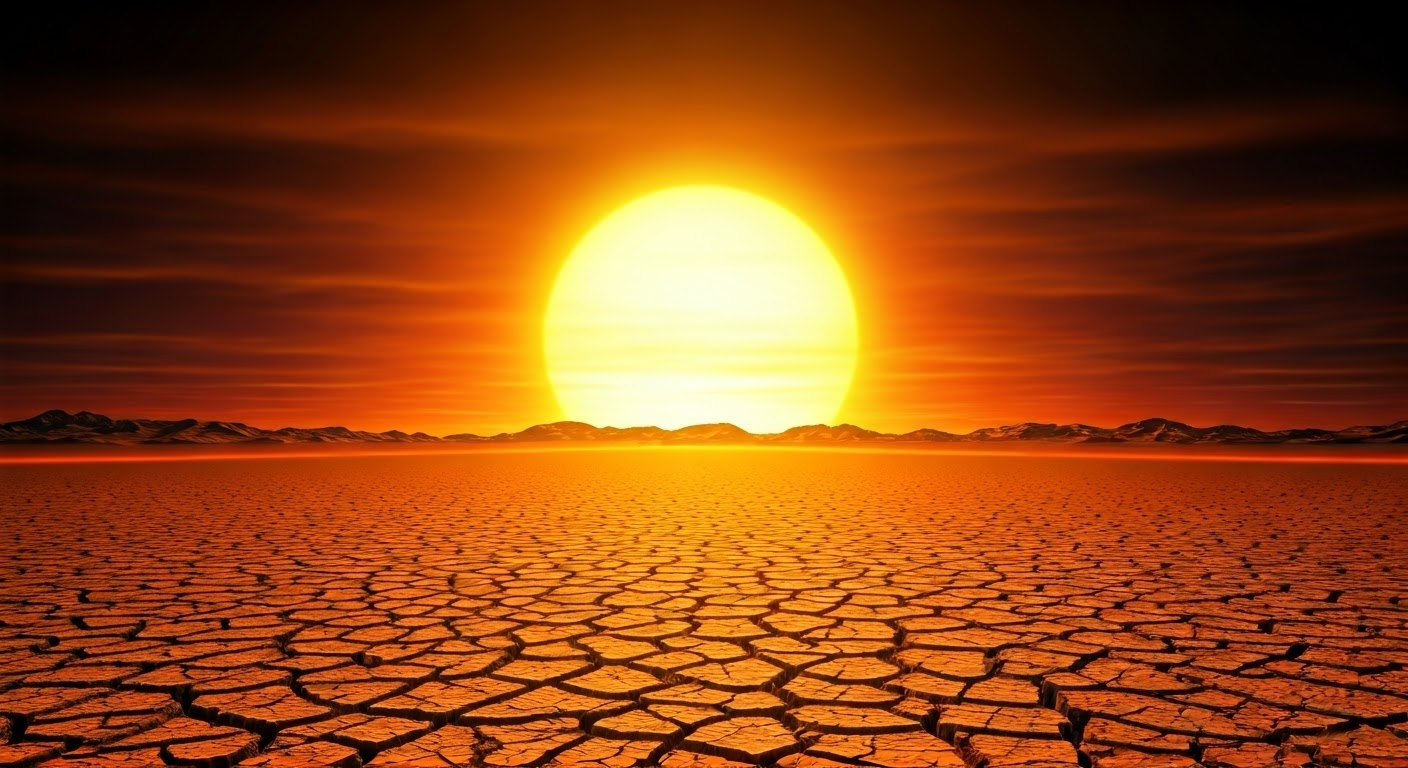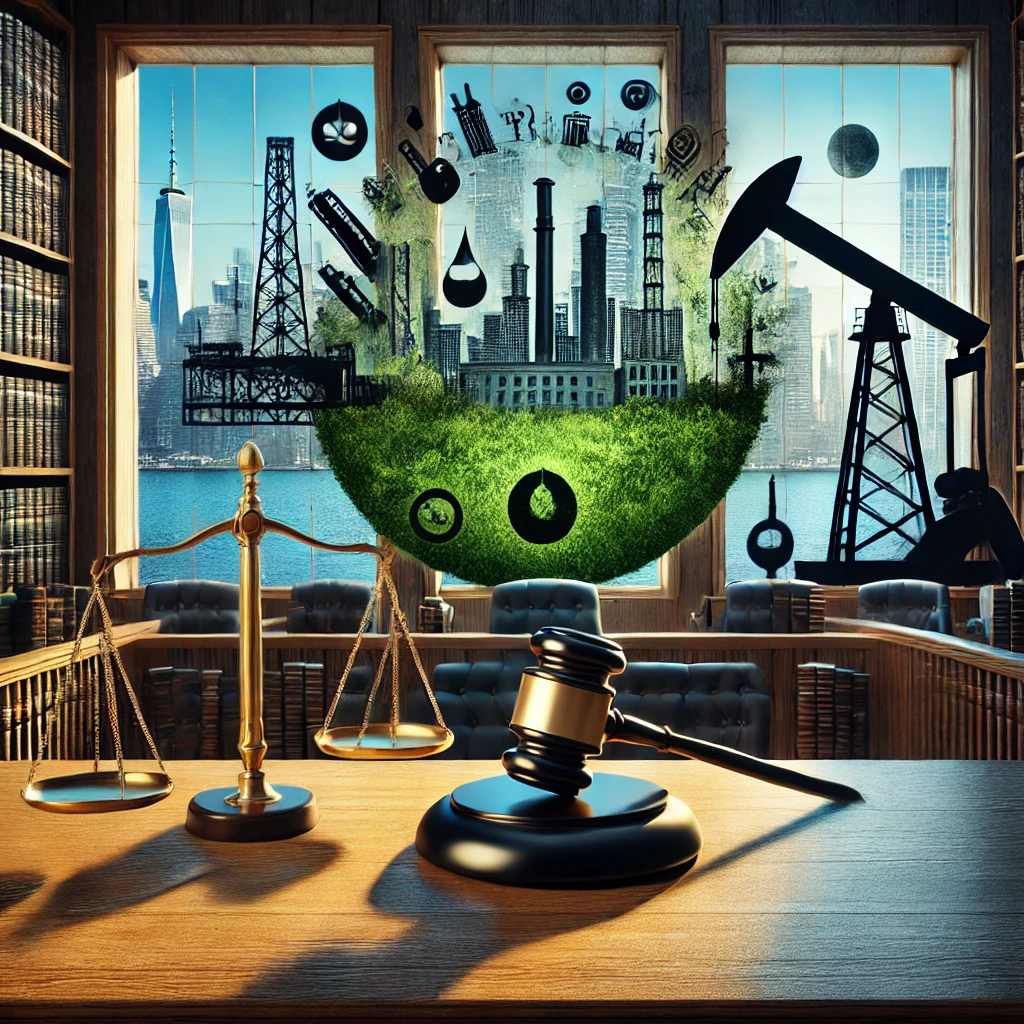Key Highlights
- Brazil is pioneering water conversion technologies to address water scarcity and bolster its renewable energy capacity.
- The country aims to leverage its vast water resources to generate clean energy and promote sustainable development.
- Innovative techniques like atmospheric water harvesting are being explored to convert humidity into usable water.
- This initiative aligns with Brazil’s commitment to climate action and its goal of achieving carbon neutrality by 2050.
- The potential benefits include improved water access for communities, reduced dependence on fossil fuels, and boosted economic growth.
Introduction
In a time of climate change and its effects on energy production, developing countries like Brazil are making important changes. One notable innovation is Brazil’s new method for converting water into enough electricity. This fresh approach aims to turn the nation’s plentiful water into a lasting source of clean energy. It also seeks to address the serious problems of water scarcity that many areas face.
The Awakening of Brazil’s Water Innovation

Brazil has long been known for its strong role in hydropower, including the Itaipu hydroelectric dam and the Itaipu Binacional Hydroelectric Dam. Now, it is also focusing on new technologies to convert water. This change shows Brazil’s dedication to sustainability and its fight against climate change. The country is aware of the great possibilities in its water resources. It aims to change how water is used and how energy is made.
As the world needs more clean energy and fresh water, Brazil’s creative ideas put it in a good place for sustainable growth, which could positively impact its GDP. By putting money into these new technologies, Brazil can lead the way for other countries like Egypt and those with lots of water that want to grow economically while also caring for the environment.
Pioneering Water Conversion Techniques in Brazil
Brazil’s strategy focuses on using new ways to get water. One method is atmospheric water harvesting. This technique collects moisture from the air and turns it into usable water. It’s especially helpful in dry areas. It provides a sustainable solution for communities facing water shortages.
Additionally, Brazil is leading in developing new desalination technologies. These systems use renewable energy, like solar and wind power, to remove salt from seawater. This provides a steady source of freshwater for people living near the coast, including regions in India and China. It also decreases reliance on overused freshwater sources. These developments are important for ensuring water security and helping communities adapt to climate change.
The Catalysts for Change: Scarcity and Sustainability
Brazil is focusing on water conversion technology for two main reasons: lack of resources and a strong commitment to being sustainable. Even though Brazil has a lot of water, it is not spread out equally. Some areas, including those that resemble the challenges faced in South Africa and other regions in Asia, struggle with water shortages, especially during droughts. This shows that Brazil needs new ways to provide fair access to water for everyone.
At the same time, Brazil is making sustainability and climate action a top priority. The country wants to shift away from fossil fuels and sees water conversion as a way to boost its renewable energy and lower its carbon footprint.
By exploring water conversion technologies, Brazil is adopting smart resource management. This helps create a more sustainable future for the next generations. By addressing water scarcity and using clean energy, Brazil shows its commitment to caring for the environment while supporting social and economic growth.
A Closer Look at the Technologies Behind Water Conversion

To understand how important this project is, we need to look at the science behind changing water sources. There are different technologies that capture humidity in the air and clean seawater. Each one provides a special way to make the most of Brazil’s water resources.
Let’s look closer at these methods and see how they could change water and energy in Brazil. They might also help create a sustainable future for the world.
From Vapor to Vitality: The Science of Water Harvesting
Atmospheric water harvesting is no longer just a concept from science fiction. It is now a real solution that is becoming popular in Brazil. This smart technology pulls moisture from the air, even in places with low humidity, and turns it into clean, drinkable water.
Here’s how it works:
- Condensation: Special devices replicate the natural process of condensation. These devices cool humid air to change water vapor into liquid droplets.
- Collection: The water that is collected flows into storage tanks, where it can be filtered and used, making it a sustainable and accessible source of water.
- Renewable Energy: The whole process can use renewable energy sources like solar panels. This cuts down on harm to the environment and ensures that clean water is available, even where traditional water sources are missing.
This method is very promising for fighting water shortages. It can help remote communities and reduce the impact during droughts. It also helps ease the pressure on current water sources and supports adaptation to climate change.
Renewable Energy’s Role in Water Conversion Processes
At the center of Brazil’s plan for water conversion is the strong use of renewable energy. This fits with Brazil’s goal of switching to clean energy and lowering carbon emissions. They are using solar, wind, and hydropower in water conversion processes. This improves energy efficiency and lowers the impact on the environment.
For example, desalination plants, which use a lot of energy, are now running on solar or wind energy. This makes the process much more eco-friendly and cost-effective over time. This way, Brazil reduces its need for fossil fuels. It also supports a circular economy where clean energy helps produce clean water.
By using these sources of renewable energy, Brazil shows a smart way to grow sustainably. It illustrates how clean energy can solve important resource problems while also boosting economic growth.
Impact and Implications of Brazil’s Water Strategy
Brazil’s shift to water conversion is important in many ways. This change can really help people in communities that struggle to get clean water and sanitation. It can improve their lives a lot.
Additionally, this move is good for the environment. It helps protect Brazil’s diverse wildlife. As a result, Brazil can be seen as a leader in climate action and sustainable development, showing others around the world how to do it too.
Enhancing Access to Clean Water: A Social Perspective
One important benefit of Brazil’s water conversion project is that it might improve access to clean water. This is especially crucial for rural areas and communities that do not have many resources. In the past, these places faced big problems getting safe and dependable water, which affected health, sanitation, and overall quality of life.
Brazil plans to fix this by using small water systems like atmospheric water harvesters. This will help to ensure that everyone has water security. Providing clean water to these communities helps people, boosts health, and promotes fairness in society.
Clean water also brings many other benefits. It leads to better sanitation, fewer diseases, and more chances for education. This is very important for women and girls, as they often have to gather water for their families.
Environmental Benefits: Preserving Brazil’s Biodiversity
Brazil’s efforts to convert water have many environmental benefits. They help protect the unique biodiversity in the country. By using water conversion technologies, Brazil can reduce its use of natural water sources like rivers and aquifers. This helps lessen the pressure on fragile ecosystems and keeps aquatic habitats healthy.
Additionally, Brazil focuses on using renewable energy to power these water processes. This goal fits with Brazil’s plan to lower greenhouse gas emissions and achieve significant emissions reductions to fight climate change, which is particularly relevant in Latin America, including Mexico. By cutting back on fossil fuels, Brazil moves closer to reaching its sustainability targets. This sets a strong example for other countries to follow.
This overall strategy shows that it is possible to have economic growth while caring for the environment. In the early hours of Sunday morning, it highlights how new technologies and Nationally Determined Contributions can help fight climate change and protect our planet’s precious natural resources.
Challenges and Controversies Surrounding Water Conversion
The journey to widely using water conversion comes with many challenges and debates. We need to balance new technology with traditional practices. It is also important to listen to concerns from local communities.
At the same time, we must think about if these technologies make economic sense over time for the least developed countries. We need to ensure they are accessible and sustainable, as this roadmap is vital for a country that aims to develop while supporting fairness in society.
Balancing Technology with Tradition: The Local Communities’ Response
Integrating new technologies can be helpful, but we need to think carefully about how they affect traditional ways of living. In Brazil, indigenous communities have strong ties to their water sources. When we bring in new water conversion technologies, we must do so in a thoughtful and inclusive way.
Having open talks, involving the community, and respecting what indigenous people know are key. This helps ensure that new technologies support, not upset, traditional practices. Listening to the local communities during planning and taking their worries seriously is crucial for a just transition to better water management.
Also, giving local communities the knowledge and skills to use these technologies helps them feel like they own the process. This will help ensure that the changes last over time. This inclusive approach can reduce conflicts and promote fairness. It builds a sense of shared responsibility for managing water resources.
Navigating the Economic Hurdles: Costs vs. Benefits
As with any emerging technology, the economic feasibility of water conversion remains a crucial consideration, particularly in addressing initial costs and ensuring long-term affordability. Implementing large-scale water conversion infrastructure requires substantial investment, which can pose a challenge, especially for developing economies like Brazil.
However, the long-term cost-benefit analysis presents a compelling case for these investments. As the technology matures and economies of scale are realised, the costs associated with water conversion are expected to decrease.
| Costs | Benefits |
| Initial infrastructure costs | Reduced reliance on costly water treatment plants |
| Ongoing maintenance expenses | Creation of green jobs in technology and engineering |
| Research and development costs | Improved health outcomes and reduced healthcare expenditures |
Furthermore, the potential economic benefits of improved water access, enhanced agricultural productivity, and reduced reliance on fossil fuels cannot be overstated. Attracting investments from private sources and leveraging international climate finance mechanisms are crucial to driving down costs and making these technologies accessible on a larger scale. The role of partnerships, both within and outside of Brazil, will be essential in navigating these economic considerations and ensuring the long-term success of water conversion initiatives.
Conclusion
Brazil is working hard on water conversion programs. These efforts are not just new ideas but very important for sustainability. Brazil is using new technologies to tackle water shortages while also caring for the environment and people. Adding renewable energy to these water processes is a big step toward making clean water more available and protecting ecosystems. As Brazil finds ways to manage water sustainably, price concerns and community support are still important. It is key to mix old methods with new technology and take economic issues into account for these programs to succeed. Brazil’s forward-thinking methods for water conversion show a great example for others around the world. They highlight how important it is to blend new ideas with people’s needs.
Frequently Asked Questions
What Is Water Conversion and How Does It Work?
Water conversion means changing water from one form or quality to another. This change helps make water usable for different needs. It may include methods like desalination, which takes salt out of seawater. It can also include capturing moisture from the air, known as atmospheric water harvesting. Often, these processes use renewable energy.
Why Is Brazil Focusing on Water Conversion Technologies?
Brazil has two big challenges. Some areas have a shortage of water, and there is a need for a national plan for renewable energy. One solution is water conversion. This process helps use unusual sources like humidity and seawater. This can improve water security and support eco-friendly practices.
How Will These Technologies Affect Local Communities and Ecosystems?
The effect on nearby communities and nature is very important. To make sure these technologies help communities, protect nature, and reduce harmful effects on the environment, we need to focus on sustainable practices. Community involvement and careful planning are key to achieving these goals.
Can Water Conversion Solutions Be Applied Globally?
The ability to scale water conversion technologies is very hopeful for use around the world. As this technology improves and becomes cheaper, it has the power to help solve water shortages. It can also support efforts to fight climate change globally.
What Are the Long-term Goals of Brazil’s Water Conversion Initiative?
Brazil aims for long-term goals that go beyond quick fixes. The country hopes for a future of steady growth, which will require effective financing strategies. In this future, water security will be guaranteed, similar to the initiatives taken by countries like Azerbaijan and Germany. Climate resilience will also be strengthened. Brazil wants to secure its position as a leader in renewable energy solutions.


